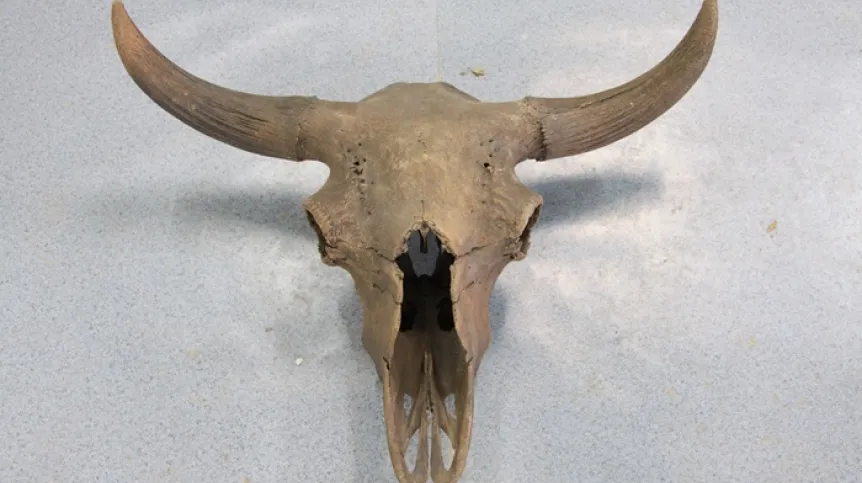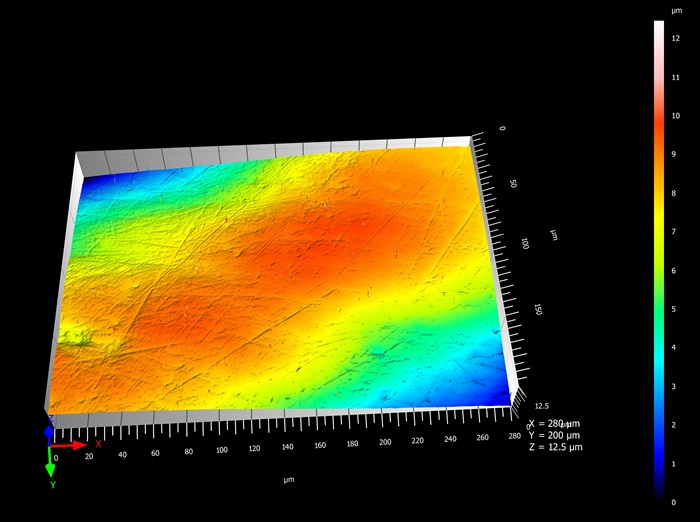
The results of new research challenge the common view that the steppe bison was a strictly grazing animal, feeding mainly in the steppes, say scientists from the Mammal Research Institute PAS, who reconstructed the diet of the last representatives of the legendary megafauna.
The steppe bison (also called steppe wisent) was one of the most characteristic species of legendary megafauna, which roamed areas in the northern hemisphere in the Pleistocene and mostly became extinct at the end of that period, say researchers from the Mammal Research Institute of the Polish Academy of Sciences in Białowieża.
Steppe bison were considered specialised grazers, but this view is increasingly being challenged. The researchers from the Mammal Research Institute PAS wanted to verify its validity.
The steppe bison, like its smaller, modern cousin (the European bison), had a number of morphological features, including wide snouts and high-crowned teeth, which may indicate adaptation to grazing. However, research on their diet has so far been very fragmentary and has often covered single populations or specimens in short time periods, we read in the press release.
The steppe bison became extinct in Europe around 18,000 years ago, and the species survived the longest in Siberia, where it finally died out around 10,000 years ago. An international team of researchers led by scientists from the Mammal Research Institute at the Polish Academy of Sciences in Białowieża and the PALEVOPRIM Laboratory at the University of Poitiers in France undertook the analysis of the steppe bison's diet in almost the entire range of the species' past occurrence, covering Eurasia and Alaska, in the period between 800,000 and 18,500 years ago. The results of this research have just been published in the journal Royal Society Open Science.
Food eaten by herbivores as a result of biting and/or chewing leaves micro-traces of damage to the enamel on mammalian teeth, visible only under a microscope. The shape, depth, distribution and density of this damage depend on the type of food eaten, e.g. grasses containing silica or dicotyledonous plants enriched with lignin (e.g. shoots of trees and shrubs), and its proportion in the diet. Scientists use micro-traces left by food on tooth enamel to study the composition of the herbivores' diet. The micro-traces are fixed on a special silicone and then 3D-scanned at 100x magnification.
The scientists used this Dental Microwear Textural Analysis (DMTA) method, which enables the study of both contemporary and fossil specimens, to determined the type of diet of steppe bison inhabiting Eurasia and Alaska from the Middle to Late Pleistocene. Additionally, thanks to radiocarbon dating of teeth and climate data modelling, they reconstructed the types of habitats of steppe bison in the Late Pleistocene.

The research found that steppe bison inhabited various types of plant biomes: from a mosaic of temperate forests and steppes in the lands of today's Serbia to tundra in Siberia and Alaska. Despite the environmental differences in the areas they inhabited, the diet of these large herbivores was similar. All the analysed populations of steppe bison living in the Middle to Late Pleistocene had a mixed diet, i.e. shoots and grasses. The diet of the steppe bison was also compared with the recently identified genetically extinct sister clade of the modern bison, called bison X. The microwear parameters of the bison X teeth surface from Amvrosivka in Ukraine were comparable to the wear parameters of cattle grazing on meadows and differed from all populations of steppe bison.
'The results of our research challenge the common view that steppe bison were strictly grazing animals, feeding mainly in steppe areas. Moreover, the type of diet of steppe bison did not change over time, which indicates a lack of plasticity in this species. It could have played an important role in its extinction in the face of climatic and environmental changes at the turn of the Late Pleistocene and Holocene', says Dr. Emilia Hofman-Kamińska from the Mammal Research Institute at the Polish Academy of Sciences in Białowieża, head of the research grant on the reconstruction of the pattern of habitat use and diet of steppe bison, financed by the Polish National Science Centre.
The study of dietary plasticity as a mechanism of adaptation to climatic and environmental changes in steppe bison, which were common in the past, aims to bring us closer to understand the evolutionary history of these large herbivores and the causes of the extinction of representatives of the legendary megafauna, which included mammoth, woolly rhinoceros, giant deer and steppe bison.
PAP - Science in Poland
zan/ kap/
tr. RL













